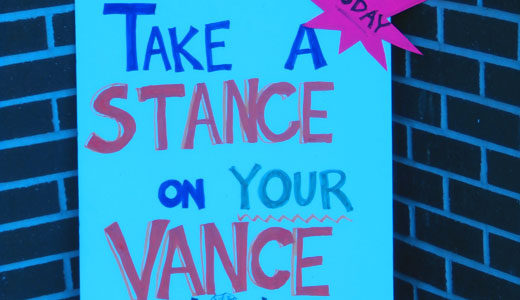
The Vance Avenue neighborhood lies just south of downtown Memphis and is an area rich with African-American history. Civil Rights leader Benjamin Hooks grew up in the neighborhood and R&B musician Mavis Staples began her career there. Today the median income for someone from the Vance Ave. neighborhood is $7,000, making it the poorest area in all of Memphis.
The fact that the Vance community is so poor is no mistake: according to community organizer Laura Sullivan, “the disinvestment in the area has been deliberate.” According to Sullivan, the reason why Vance is suffering this deliberate economic attack is due to the fact that it is right next to the tourist area of downtown. Sullivan explains, “whole sections of north and south Memphis have been completely written off.” However, due to its proximity to downtown, the City of Memphis has another plan: run the neighborhood down, buy the residents off, and ship them out.
Foote Homes, the last remaining public housing in Memphis, is an example of the city’s plan in action. After receiving a $250,000 Choice Neighborhoods federal planning grant to make the public housing community a more “viable and sustainable community,” the city of Memphis intends to do with Foote Homes what it did to the Cleaborn Homes Housing Project with a Hope VI grant – use Section 8 to relocate the residents to areas across the city, where there is not reliable public transit to the social services located downtown, and, in effect, to destroy their community.
The City of Memphis has a plan for the rest of the Vance Avenue Community: Triangle Noir. Triangle Noir has three main objectives: gentrify the neighborhood, build a luxury hotel, and turn the neighborhood into a tourist district. According to Professor Ken Reardon they would create an African-American heritage tourist site following the model of the city of Celebration in Florida, a community planned by the Walt Disney Company.
On September 13th over two hundred people packed into St. Patrick’s Community Center. In the standing room-only meeting people from the community, including two Catholic priests, a handful of police officers in uniform, and more than one woman in a hijab, all crowded together to talk about the future of their neighborhood.
Prof. Reardon facilitated the discussion that covered the plan put together by the Vance Avenue Collaborative in consultation with residents about their vision for their neighborhood, called the Renaissance Plan. While children played with purple pipe cleaners, clay, and markers in an adjoining room, Marticus Muhammad, a lead-based-paint housing inspector spoke up, “My grandfather helped build these homes.” He added, “People have a right to live nice…otherwise, we are just building a permanent underclass.”
Delvin Lane stood at the microphone and wondered aloud, “At what point are we going to empower the people to take care of themselves?” He paused while the crowd applauded, “After all, fixing up a cardboard shack doesn’t help the people.”
James Smith, a thin young man, stood up and brought the entire meeting into focus. Confidently holding the microphone in his hand, he said, “Capitalism is not taught in our communities, and we end up the victims of capitalism.” He continued, “The plan of our government is for middle-class people to return to this neighborhood. But,” he said, “the only way people could afford to live here in the future is with government jobs and the government is downsizing these same jobs.”
When it comes down to it, beginning with President Clinton’s administration, there have been two federal plans for urban renewal.
One was HOPE VI, which was instituted over a decade ago and involves tearing down public housing and replacing it with ‘mixed-income’ developments, shutting communities down, spreading their people all over a city, and opening up prime real estate for developers.
The other is Choice Neighborhoods. Under Obama, Choice Neighborhoods took the place of HOPE VI and, unlike HOPE VI, these grants address not only housing, but all of a community’s needs, including public services and employment; they also require community research and involvement in any development.
According to Laura Sullivan, if a Republican gets elected, Choice Neighborhoods, and the possibility of resident-driven redevelopment of the Vance Avenue Community, “is history.”
Speaking frankly, Sullivan said, “If Obama doesn’t get re-elected, we’re f*cked.”
On October 16, the City Council will hear the two plans, the one put forth by the developers and the city’s housing authority, Triangle Noir, and the one generated by over a year of community input, Vance Avenue Collaborative’s Renaissance Plan. The one chosen will be proposed as part of the 2012 Choice Neighborhoods grant application, which could bring over $30 million to the area. The fate of the people of Vance Avenue hangs in the balance.
Photo: James Raines/PW









Comments